Examples of input devices are a Keyboard, Mouse, Webcam, Microphone, touch screen, Barcode scanner, Light pen, and more.
An input device is a hardware component. It lets users enter data and commands into a computer or digital device.
Examples of Input Devices
Here are the best examples of input devices in computers:

1. Keyboard
A keyboard is a common input device. It has keys for letters, numbers, and special functions. When a user presses a key, the keyboard sends a signal to the computer. The computer then processes this input and displays the correct character or performs the assigned action.
Most keyboards have between 84 and 110 keys. Some keyboards also include extra buttons for volume control, shortcuts, and multimedia functions. Keyboards connect to computers using wires (USB) or wirelessly (Bluetooth).
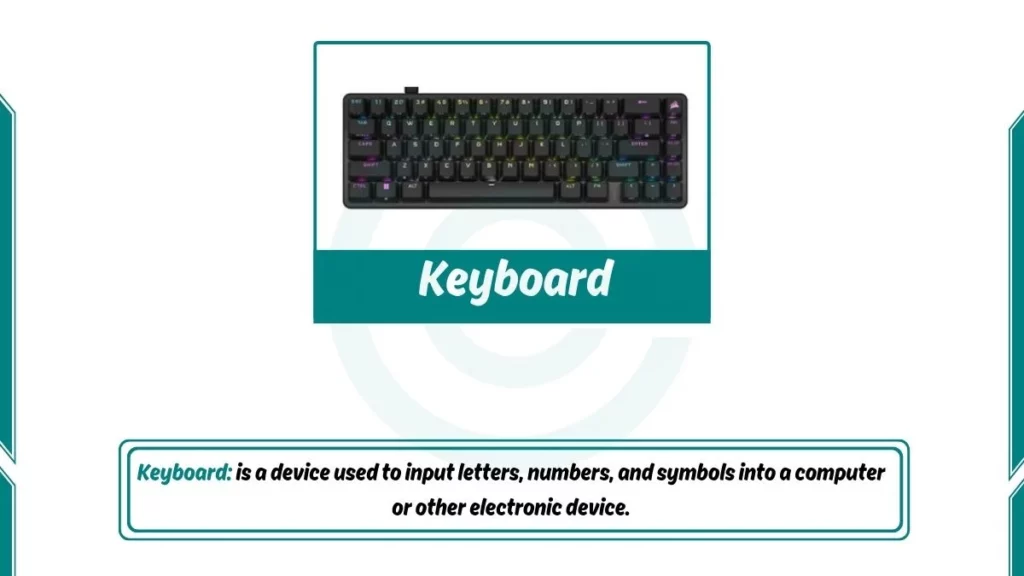
Stats: Most computer keyboards have between 84 and 110 keys
2. Mouse
A mouse is a handheld input device. It controls the movement of the cursor on the screen. When the user moves the mouse, sensors inside detect the motion and send signals to the computer. The computer then moves the cursor accordingly.
A mouse usually has two or three buttons. The left button selects items, while the right button opens menus. Some mice also have a scroll wheel for easy navigation.
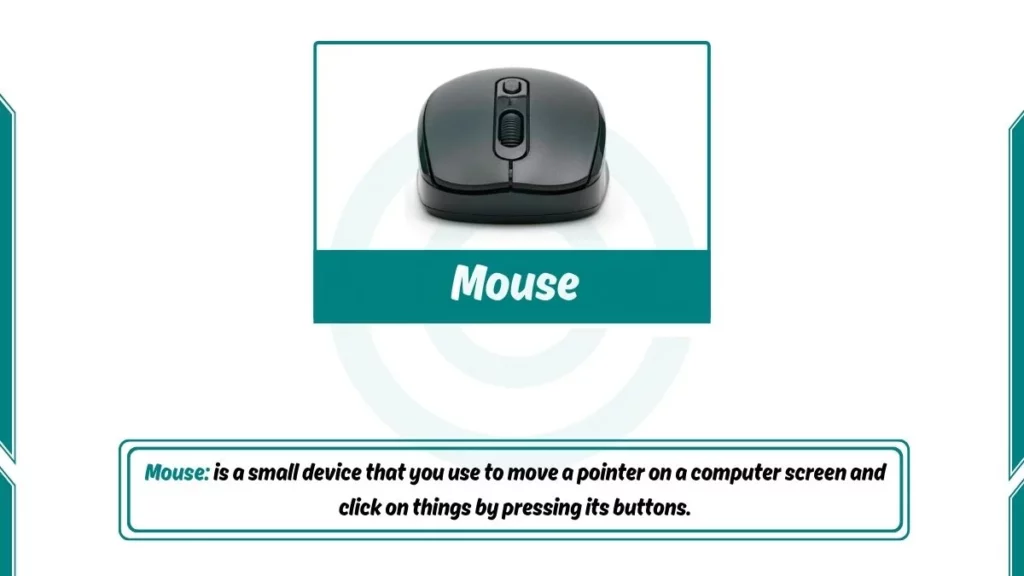
Stats: The first computer mouse was built at Stanford Research Institute in 1963 by Douglas Engelbart
3. Joystick
A joystick is an input device which is mostly used for playing video games. It has a stick that can be tilted in different directions. Moving the stick sends signals to the computer, which then moves objects on the screen.
Joysticks often have additional buttons for extra functions. They are commonly used in flight simulators and arcade games.
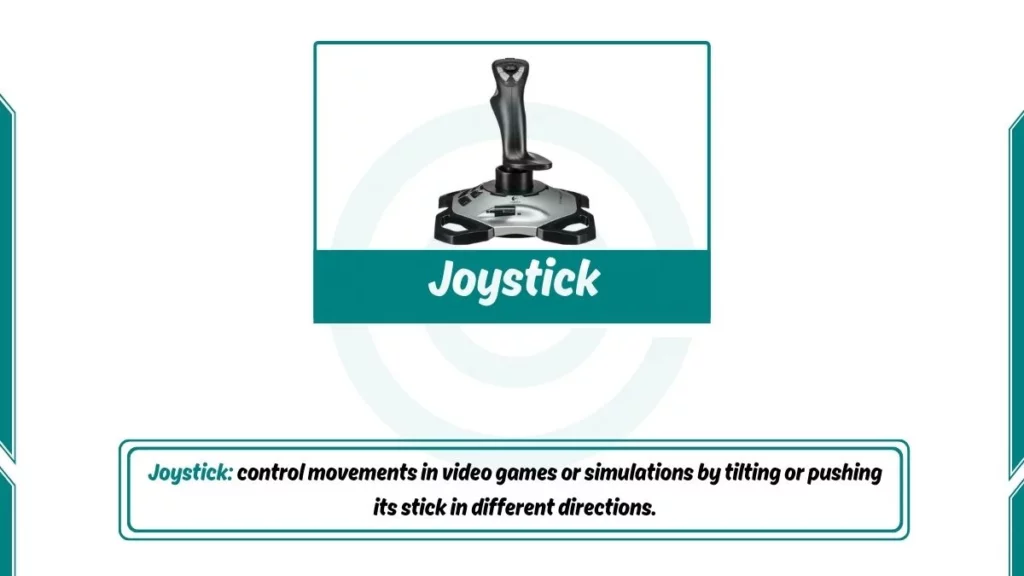
Stats: Joysticks have been used as input devices since the early 1900s
4. Touch screen
A touch screen is both an input and output device. Users interact with it by touching the display directly. The screen detects the touch and sends the input to the computer.
Touch screens are used in smartphones, tablets, ATMs, and kiosks. Modern touch screens support multi-touch, allowing multiple fingers to be used at the same time.

Stats: The first touchscreen was developed in 1965 at the Royal Radar Establishment in Malvern, UK
5. Microphone
A microphone is an audio input device. It captures sound waves and converts them into electrical signals. These signals are then sent to the computer for processing.
Microphones are used for voice calls, recording audio, and voice recognition software. Today, microphones come in different types, such as built-in, USB, and wireless.
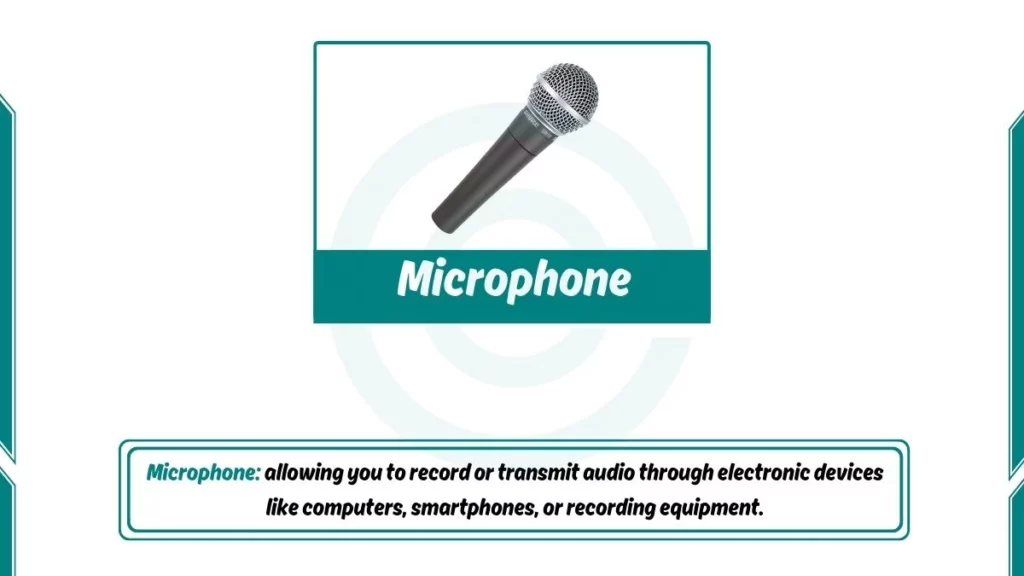
Stats: Alexander Graham Bell invented the first microphone in 1876
6. Digital Camera
A digital camera captures photos and videos in digital format. Users can transfer these images to a computer for editing or storage. The camera converts light into digital data, which the computer can process.
It had a low resolution compared to modern cameras. Today, digital cameras are found in smartphones, webcams, and professional photography equipment.
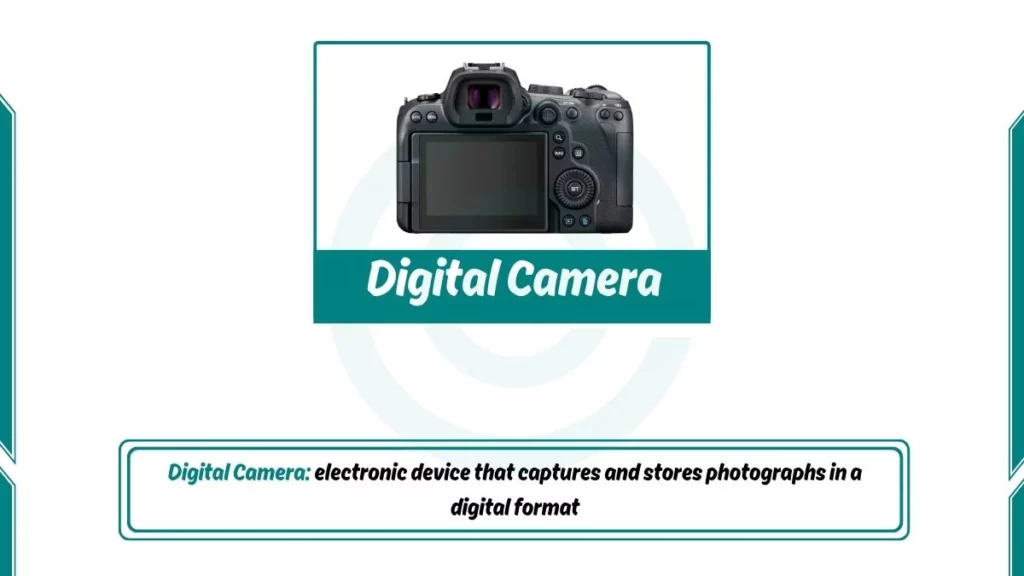
Stats: First consumer digital camera was the Dycam Model 1. It released in 1990 with a resolution of 375×240 pixels
7. Barcode/QR Code Scanner
A barcode scanner reads black-and-white lines (barcodes) or square patterns (QR codes). It uses light sensors to detect the code and sends the data to the computer.
Barcode scanners are used in stores, warehouses, and libraries. Scanning a QR code can open a website, display text, or save contact details.
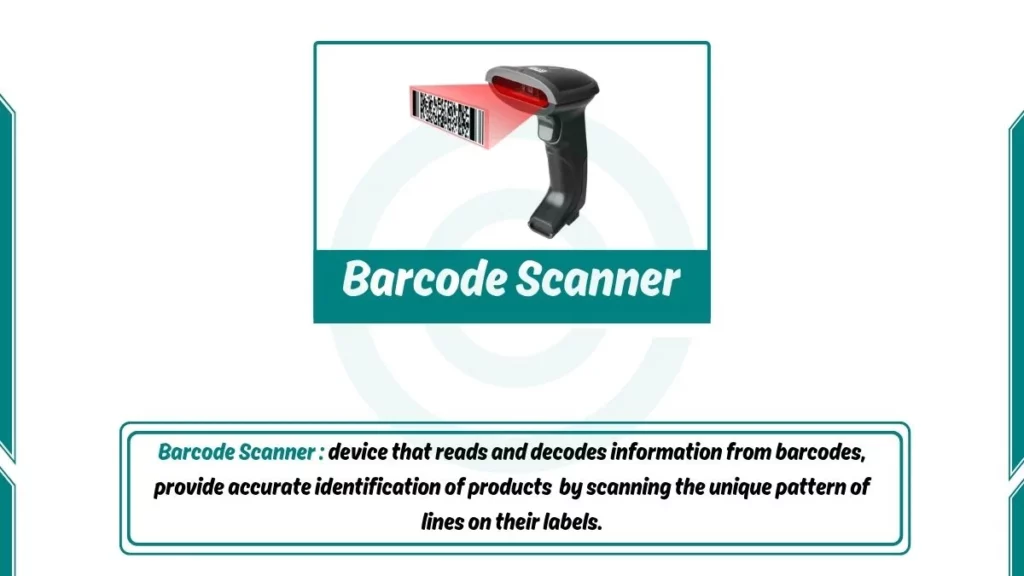
Stats: QR codes were invented in 1994 by the Japanese company Denso Wave
8. Game Controller
A game controller is used to play video games. It has buttons, joysticks, or motion sensors to control game characters. When a button is pressed, the controller sends a signal to the gaming device.
Popular game controllers include gamepads, steering wheels, and motion-sensing remotes.Modern controllers often have vibration feedback for a better gaming experience.
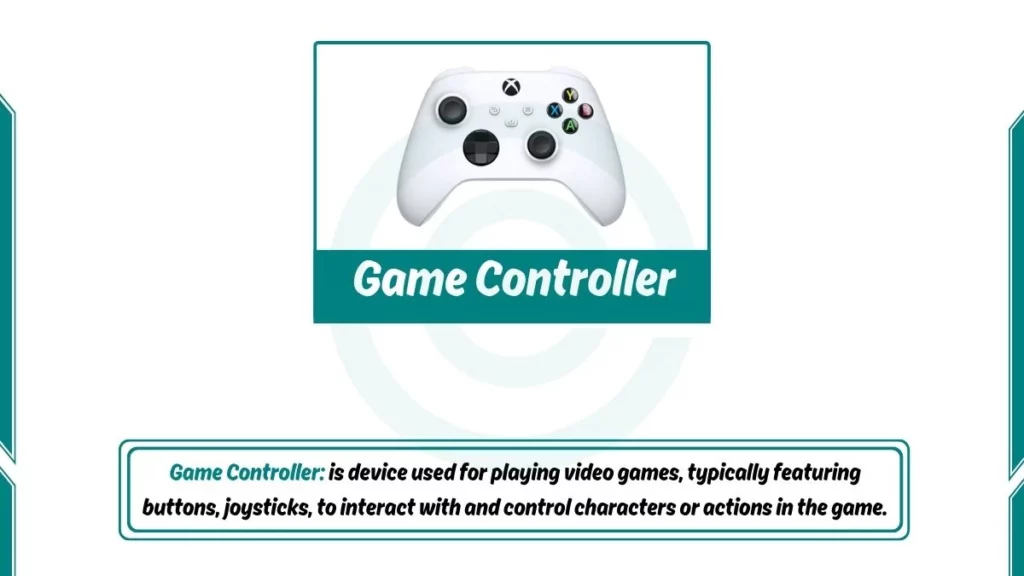
Stats: First game console controller with an analog joystick was introduced by Nintendo in 1996 with the Nintendo 64
9. Webcam
A webcam is a small digital camera attached to a computer. It captures live video and images. The video can be sent over the internet for video calls or streaming. Today, webcams are built into most laptops and used for online meetings, live streaming, and security monitoring.
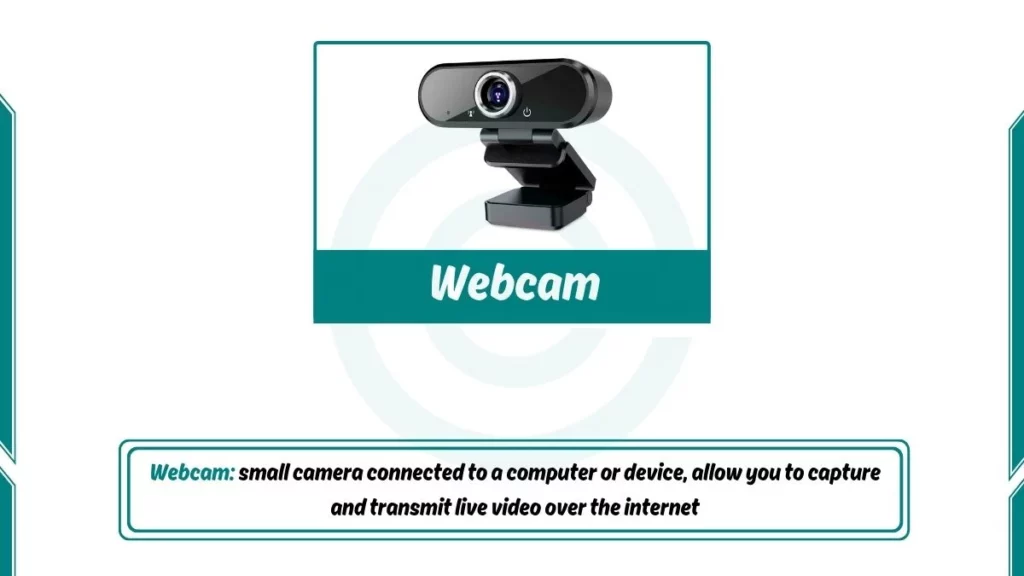
Stats: One of the first webcams was deployed at Cambridge University in 1991 to monitor a coffee maker
10. Light Pen
A light pen is a computer input device shaped like a pen. Users can point directly at elements on a display screen to select, draw, or manipulate them by using this device. Light pens can detect and capture positions on CRT and early LCD screens based on cathode-ray tube technology.
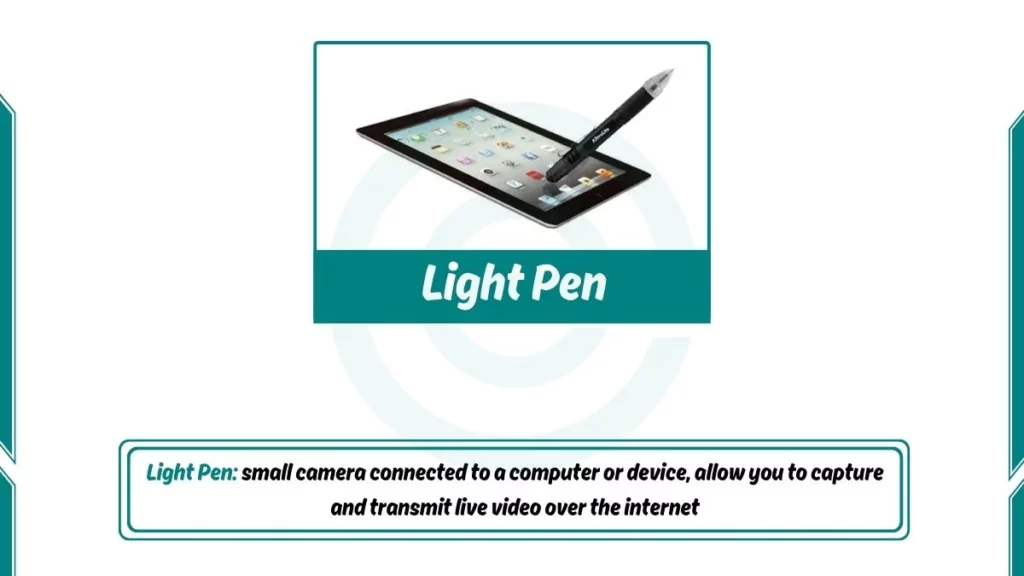
Stats: The first light pen was created in 1955 by Tom Dimond while working at MIT Lincoln Laboratory
Test Your Knowledge
We have a quiz for you about examples of Input Devices. It has 10 points. Try our quiz to see how much you know. Let’s start our quiz with correct answers.
